rotten > Library > Religion > Bible > The Historical Construction of The Bible > A New Testament—The Rise of the Christian Church > Secret Gospel of Mark
The Secret Gospel of Mark
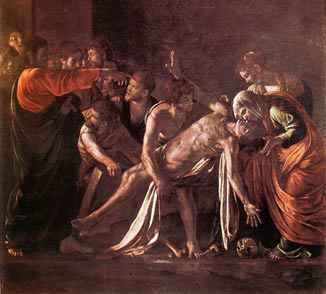 The Secret Gospel of Mark was rediscovered in the library of the Mar Saba Monastery near Jerusalem in 1958. Morton Smith, a visiting Theology graduate student from Columbia University, had just spent many tedious weeks sorting and cataloguing the library's manuscripts, when he discovered something that absolutely stunned him. In the back of the 1646 edition of the Epistolae genuinae S. Ignatii Martyris someone had recopied what appeared to be a second century letter from Clement of Alexandria (a.k.a. Clement of the Stromateis) to a fellow Christian identified only as "Theodore".
The Secret Gospel of Mark was rediscovered in the library of the Mar Saba Monastery near Jerusalem in 1958. Morton Smith, a visiting Theology graduate student from Columbia University, had just spent many tedious weeks sorting and cataloguing the library's manuscripts, when he discovered something that absolutely stunned him. In the back of the 1646 edition of the Epistolae genuinae S. Ignatii Martyris someone had recopied what appeared to be a second century letter from Clement of Alexandria (a.k.a. Clement of the Stromateis) to a fellow Christian identified only as "Theodore".
Translating the letter from Greek, Smith discovered that it contained two unknown fragments of the Gospel of Mark. Each fragment fit neatly into the existing Gospel text, creating resultant narrative that that was not only more detailed, but also more meaningful. Additionally, the fragments resolved some of the strange gaps that had previously existed in Mark's Gospel. For example, biblical scholars had long pondered why Mark 10:46 raises the issue of Jesus arriving in Jericho, but then never says what went on there. ("Then they come to Jericho. As he was leaving Jericho with his disciples..." ) It had long been suspected that something had been left out, or purposely deleted. Indeed, according to the fragment supplied by Clement, the text should have read: "Then he came into Jericho. And the sister of the young man whom Jesus loved was there with his mother and Salome, but Jesus would not receive them."
Of course, as we shall see with the following passage, Clement's additions to the Gospel raise more questions than they answer. In this passage, which actually preceeds the one quoted above (and which fits between Mark 10.34 and 35) we learn a bit more about this same young man and his relationship with Jesus:
They came to Bethany. There was one woman there whose brother had died. She came and prostrated herself before Jesus and spoke to him. "Son of David, pity me!" But the disciples rebuked her. Jesus was angry and went with her into the garden where the tomb was. Immediately a great cry was heard from the tomb. And going up to it, Jesus rolled the stone away from the door of the tomb, and immediately went in where the young man was. Stretching out his hand, he lifted him up, taking hold his hand. And the youth, looking intently at him, loved him and started begging him to let him remain with him. And going out of the tomb, they went into the house of the youth, for he was rich. And after six days Jesus gave him an order and, at evening, the young man came to him wearing nothing but a linen cloth. And he stayed with him for the night, because Jesus taught him the mystery of the Kingdom of God. And then when he left he went back to the other side of the Jordan.
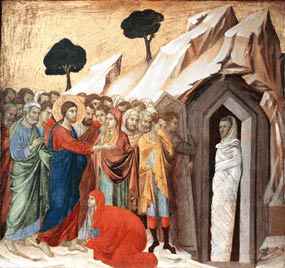 Smith made a considerable flap for himself by choosing to interpret this passage as factual rather than mythological. That is, he flew in the face of (secular) academic tradition and allowed that perhaps Jesus truly did bring someone back from the dead, rather than treating the passage as a folk myth later created about the beloved teacher. He went on to propose that Jesus' "Kingdom of God" was a metaphysical state of being, a mental and spiritual state in which one could dwell if aware of the cosmos as it truly is (without the veil of conditioned belief and the usual limitations of the senses), and that Jesus could initiate a person into this state of awareness.
Smith made a considerable flap for himself by choosing to interpret this passage as factual rather than mythological. That is, he flew in the face of (secular) academic tradition and allowed that perhaps Jesus truly did bring someone back from the dead, rather than treating the passage as a folk myth later created about the beloved teacher. He went on to propose that Jesus' "Kingdom of God" was a metaphysical state of being, a mental and spiritual state in which one could dwell if aware of the cosmos as it truly is (without the veil of conditioned belief and the usual limitations of the senses), and that Jesus could initiate a person into this state of awareness.
But what really pushed Smith's critics over the edge was his assertion that the initiation rite into the Kingdom of Heaven may have included sex, specifically in this case, sex with the young man whom Jesus had raised from the dead. Now no doubt most modern Christians would find it difficult—if not blasphemous—to figure out how fornication, especially homosexual fornication, could possibly serve as an effective way to transmit Christianity. But those familiar with the theory that Jesus' doctrine and philsophy were influenced by the religions of the East, specifically India, might be slightly better able to see function of just such an approach.
That is, within Hinduism it has long been believed that stimulating the various chakra (or spiritual energy/life force) centers can raise or lower ones level of awareness and quality of character. And sexual activity, such as experienced through the Kama Sutra, is thought to be a powerful way to generate life force energy. Additionally, within this belief system it is further taught that a guru, or teacher, can directly influence the aura and chakras of a student, especially if that student strongly desires to become more like the master. Thus yogic initiation can involve the master's touching the initiate in the region of his brown chakra, supposedly to "open" his inner sight (third eye).
 Within the subdiscipline of Tantra, practitioners have long used erotic interplay to tune in to each other, emotionally, spiritually, and mentally. The practice involves entering deep states of calm and focus, then staring deeply into the eyes of the partner. The partners then begin to caress and then even stimulate each other genitally, all while maintaining the deep eye contact.
Within the subdiscipline of Tantra, practitioners have long used erotic interplay to tune in to each other, emotionally, spiritually, and mentally. The practice involves entering deep states of calm and focus, then staring deeply into the eyes of the partner. The partners then begin to caress and then even stimulate each other genitally, all while maintaining the deep eye contact.
While the typical application of tantra has been to achieve mutual sexual bliss, it is believed that there are and have been those enlightened masters who have used tantric methods to convey higher states of awareness to their initiates. Essentially, tantra is thought to allows individuals to attune so profoundly to each other that they can directly perceive and/or be affected by their spiritual energies, emotions, desires and knowledge. Such attunement could then facilitate the psychic sharing from master to student and perhaps (so say believers) even allow the master to introduce the student to other realms of consciousness and of the cosmos.
Now whether such methodologies really work (or merely encourage a kind of group hypnosis, brought on by the leader's charisma) is actually beside the point as far as we are concerned here. More to the point is simply establishing that religious leaders have been known to utilize sexual congress or even simply erotically tinged focusing techniques both to bond their disciples to them and to assist those disciples in accessing higher realms of spiritual consciousness. The question then is, did Jesus do so?
Rather obnoxiously, those backing the notion of a "sexual Jesus" rely rather heavily on three textual "clues" from the passages above. That is, they point to
- the young man being nearly naked (wearing the equivalent of a towel)
- the young man spending the entire night with Jesus
- the ardent love expressed by the young man (through his glances, touch, demand to be with Jesus) and the mention that Jesus also loved the young man.
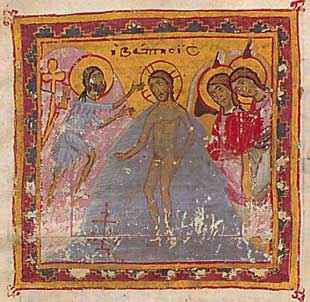 A number of modern readers have projected equally modern values and scenarios onto these descriptions, thus interpreting them as "obvious" indicators that a homosexual liason took place between the two. A number of modern readers have projected equally modern values and scenarios onto these descriptions, thus interpreting them as "obvious" indicators that a homosexual liason took place between the two.
Of course such assertions totally ignore the facts that nudity or a linen drape was the standard costume for one about to be baptized (even the baptizer was usually naked as he dipped his convert in the pool or river), that spending the whole night was a common feature of initiations into mystery religions, and that other cultures do not necessarily connect passionate affection between men with actual sexual interaction. (In some modern cultures it is common to hold hands with same-sex friends, to kiss them, etc. No genital eroticism is involved and the contact is not viewed as "sexual".)
But even fully knowing these particular facts, many serious religious scholars have continued to entertain the question, "Did Jesus have erotic interactions with some or any of his male followers?" (And if so, what does this mean about Christianity's negative slant on homosexuality?) And this is due in part to the fact that the entire purpose of Clement's letter (in which Smith found the scraps of Secret Mark) was apparently to refute this very claim.
More specifically, in the letter Clement responds to claims by the Carpocratians (a Christian sub-cult) and resulting questions from "Theodore" (who had been recently debating the Carpocratians), as to whether Mark's Gospel states that Jesus engaged in sexual and homosexual activities. The Carpocratians, who claimed to possess the "true" version of the Gospel of Mark, cite a much sexier interlude between Jesus and the young linen draped initiate. But Clement, while admitting that the version of Mark available to the general public is not the true gospel and while admitting that the Carpocratians had indeed stolen a copy of the true gospel assures Theodore that the Carpocratians then added their own distortions and lies. He specifically asserts, "naked man with naked man, and the other things about which you wrote, are not found."
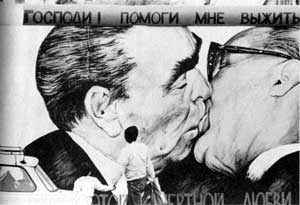 What really raises the red flag here for researchers is the fact that Clement admits there were secret teachings within the Christian Church and he admits that the Carpocratians gained access to these teachings. But he also informs Theodore that if one has knowledge of any portion of these secret teachings, one must steadfastly deny them. In fact, he advises Theodore to deny all knowledge of the Secret Gospel. He explains:
What really raises the red flag here for researchers is the fact that Clement admits there were secret teachings within the Christian Church and he admits that the Carpocratians gained access to these teachings. But he also informs Theodore that if one has knowledge of any portion of these secret teachings, one must steadfastly deny them. In fact, he advises Theodore to deny all knowledge of the Secret Gospel. He explains:
Now of the things they keep saying about the divinely inspired Gospel according to Mark, some are altogether falsifications, and others, even if they do contain some true elements, nevertheless are not reported truly. For the true things being mixed with inventions, are falsified, so that, as the saying goes, even the salt loses its savor.
... nor, when they put forward their falsifications, should one concede that the secret Gospel is by Mark, but should even deny it on oath. For not all true things are to be said to all men.
The issue here then is, that first of all Clement establishes his own willingness to lie, even upon oath, to prevent knowledge of the true Gospel of Mark from getting out. Secondly, given this fact, we have no real reason to trust him when he claims that the "real" Secret Gospel of Mark does not mention "man lying with man". And finally, even if he does happen to be telling the truth here, he also tells Theodore that the Secret Gospel itself does not contain the hard-core secret teachings and sensitive information:
... when Peter died a martyr, Mark came over to Alexandria, bringing both his own notes and those of Peter, from which he transferred to his former book the things suitable to whatever makes for progress toward knowledge. Thus he composed a more spiritual Gospel for the use of those who were being perfected. Nevertheless, he yet did not divulge the things not to be uttered, nor did he write down the hierophantic teaching of the Lord, but to the stories already written he added yet others and, moreover, brought in certain sayings of which he knew the interpretation would, as a mystagogue, lead the hearers into the innermost sanctuary of that truth hidden by seven veils. Thus, in sum, he prepared matters, neither grudgingly nor incautiously, in my opinion, and, dying, he left his composition to the church in Alexandria, where it even yet is most carefully guarded, being read only to those who are being initiated into the great mysteries.
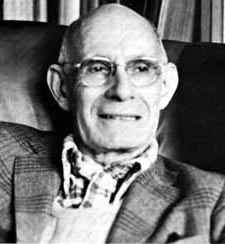 Naturally, we cannot draw from this any decisive answer as to whether or not the inspiration for Christian chastity was in reality a "sexual Jesus". But it is interesting to note that after serious accusations of fraud were levelled against Morton Smith for his alleged discovery of the document (Smith photographed the manuscript but left the original in the library at Mar Saba), the original document disappeared. That is, when researchers eager to observe the original travelled to Jerusalem to view it, they were informed it had been "lost". Essentially, staff members claimed, it had been moved to a different library and now could not be found.
Naturally, we cannot draw from this any decisive answer as to whether or not the inspiration for Christian chastity was in reality a "sexual Jesus". But it is interesting to note that after serious accusations of fraud were levelled against Morton Smith for his alleged discovery of the document (Smith photographed the manuscript but left the original in the library at Mar Saba), the original document disappeared. That is, when researchers eager to observe the original travelled to Jerusalem to view it, they were informed it had been "lost". Essentially, staff members claimed, it had been moved to a different library and now could not be found.
Finding the actual letter that Smith translated would have done much to silence those critics intent on defending the status quo of Christianity (that is, those interested who wish to pretend that modern versions of Christianity acurately reflect the real teachings of Jesus). How convenient then that the letter is now lost in some librarian's shelving stack—apparently indefinitely.
Ironically, the translation of the letter salvaged by Morton Smith reminds us that this sort of cover up has happened before. In addition to Clement's confessions about lying under oath and about Mark's failure to commit the deepest of the secret teachings to paper, we also have the fact that only part of Clement's letter has been preserved. That is, whoever copied the letter (into the back of the Epistolae genuinae S. Ignatii Martyris,) preserved only a portion of it. Thus, just as Clement is about to enlighten Theodore on the meaning and significance of this full and restored Gospel of Mark (i.e. the Secret Gospel of Mark), the text ends.
Distortions of The Roman Catholic Church
But we are children of light, having been illuminated by the dayspring
of the spirit of the Lord from on high,
and Where the Spirit of the Lord is,
it says, there is liberty, for All things are pure to the pure.
-- Clement of Alexandria
Pornopolis |
Rotten |
Faces of Death |
Famous Nudes
|